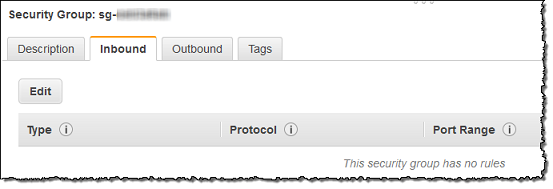

And while this information is often leveraged to strategize subsequent email campaigns, it is less commonly utilized to uncover broader customer insights and identify user segments with high lifetime value potential. When customer events and behavior are collected on a particular channel but are never used to inform cross-platform strategy, the power of this data is not fully realized.Įvery day, Mailchimp customers collect tremendous amounts of data on their current and potential customers through their email marketing efforts. Though the term “data silos” most commonly brings to mind information housed in isolated systems, this is not the only scenario in which data can fall short of its potential.
#AMAZON REDSHIFT MAILCHIMP FULL#
For example: CNAME *. A 54.239.28.Breaking down silos and unlocking the full potential of customer data is one of the main challenges growth teams face every day. Adobe Experience Platform allows data to be ingested from external sources while providing you with the ability to structure, label, and enhance incoming data using Platform services. You can create a wildcard record that can coexist with the CNAME record. The Amazon Redshift source is available in the sources catalog to users who have purchased Real-Time Customer Data Platform Ultimate. You can't create the following record: CNAME A 54.239.28.85ģ.

For example, you can have only one record type for the domain "" if the record type is CNAME. CNAME records can't coexist with other record types for the same domain in the hosted zone file.

With Route 53, you can create an alias record instead. If you created a hosted zone for the domain "then you can't create the following CNAME record: CNAME -east 1. With Route 53, you can use an alias record to point the parent domain to other supported alias targets.įor example, if you created a hosted zone for the domain "", then you can't create the following CNAME record. You can't create a CNAME record for the Parent, Naked, or Apex domain. Considerations for creating CNAME recordsġ. Check if your DNS provider supports CNAME records on a root domain using techniques such as CNAME flattening, ANAME records, or WebHops redirection. If you use a DNS provider other than Route 53 for your domain name, then you might be able to point the domain to services hosted on AWS. As a result, Route 53 returns an SERVFAIL/REFUSED RCODE error.ĭ-east 1. To create an alias record for a CNAME record, the alias target must resolve to a CNAME value.Įven if you create an invalid CNAME(ALIAS) record, Route 53 can't resolve the IP address of the endpoint. Route 53 follows the pointer in an alias record only if the record type matches. These services include Amazon API Gateway and Amazon Cloudfront. Note: Some services require you to set up a custom DNS name before creating the record. Another Route 53 record in the same hosted zone.AWS Global Accelerator – A record (IPv4).Amazon VPC interface endpoint – A record (IPv4).Amazon API Gateway custom regional API and edge-optimized API – A record (IPv4).Amazon Simple Storage Service (Amazon S3) bucket – A record (IPv4).Elastic Load Balancing (ELB) load balancer – A record (IPv4) or AAAA record (IPv6).AWS Elastic Beanstalk environment – A record (IPv4).Amazon CloudFront distribution – A record (IPv4) or AAAA record (IPv6).Resolution Create an alias recordĬreate your record using the Route 53 console and specify the necessary values for alias records.īe sure to use the correct DNS record type for IP addresses in the service you're pointing to: The authoritative response from Route 53 name servers contains an A record (for IPv4 addresses) or AAAA record (for IPv6 addresses) with the IP address of the alias target.
#AMAZON REDSHIFT MAILCHIMP SOFTWARE#
Route 53 monitors the IP address associated with an alias target's DNS name for scaling actions and software updates.

Amazon Route 53 alias records are mapped internally to the DNS name of alias targets such as AWS resources.


 0 kommentar(er)
0 kommentar(er)
